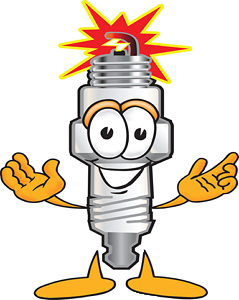


Mobile users:
For best results, view in Landscape mode.
Traditional tune-ups are an important part of preventive
maintenance on older cars, the mechanical engine parts
must be manually adjusted.
If your car is a 1999 or older, you still need a tune-up.
A tune-up is needed about every 2 years depending on your
driving conditions.
Check your owner’s manual for the tune-up schedule for your make
and model.
A tune-up refers to engine wear stuff, such as spark plugs,
spark plug wires, ignition wires, air filter, distributor cap
and rotor, oxygen sensor, timing belt, check and adjust your
carburetor.
The distributor controls the firing sequence of your spark plugs,
ensuring that your cylinders fire in the right order.
O2 sensors were mandatory on all cars manufactured since 1981.
Classic cars built before about 1980 usually have simple Kettering
ignition systems that can be maintained by DIYers.
Buy replacement spark plugs, ignition points, ignition leads, etc
as needed.
Check your owner's manual for information about ignition point
gaps, firing order, timing advance and spark plug gaps.
Replacing your car’s air filter annually is one of the easiest car
tune up tasks, and it can make your engine run noticeably
better.
If your car still has its points and condenser, your points need
to be cleaned, re-gaped or replaced as part of the tune-up.
Points are a regular wear item, just like tires and brake pads,
and should be replaced every 10,000 - 15,000 miles, depending
on your driving habits.
Improperly maintained points can result in difficulty starting,
lack of power, and poor fuel economy.
The ignition points will be held in with 2 screws.
One screw can be used to set the gap, the other holds the points
in place.
A wire from the outside of the distributor connects to the condenser
and the ignition switch.
Replace the spark plugs, distributor cap and plug leads in
the correct order.
Manufacturers use different kinds of spark plugs, check your owner’s
manual for what kind your car takes.
When you’re replacing your spark plugs, it’s important that you only
work on one plug at a time.
The order of installation matters when it comes to the timing of your
plugs, and the easiest way to preserve that order is to only work on
one plug at a time.
If the spark plug leads are not numbered, use a marker to do so.
No.1 cylinder is at the front of the car.
With transverse motors No.1 cylinder is nearest the radiator.
Note where the No.1 lead enters the distributor cap.
Begin by gently removing the wire from the first spark plug.
Once the wire has been removed, use your spark plug socket with
your ratchet to uninstall the plug; use the extender if space is tight
or you need extra leverage.
Grasp each spark plug lead at the plug end as close to the motor as
you can get and pull straight out.
Gap the new plugs before you install them.
Set a feeler gauge to the required gap and place between the center
electrode and the side one.
Do not attempt to adjust the center electrode.
Bend the outside one with pliers to open,
tap gently on a firm surface to close.
A firm sliding fit with the gauge square to the plug shows the
correct gap.
Screw in the replacement plug by hand, and then tighten it until
snug with your ratchet, do not over-tighten.
Finally, replace the wire on the new spark plug.
Place the plug wires onto them while noting the firing order.
Repeat this process for each individual spark plug.
Fuel filters may also need to be replaced during a tune-up.
Like your air filter, the fuel filter keeps dirt and contaminants that
may be in your fuel system from reaching sensitive components
like fuel injectors, where they could affect engine performance.
Check your owner's manual or ask your mechanic for
recommendation on when the fuel filter should
be replaced.


